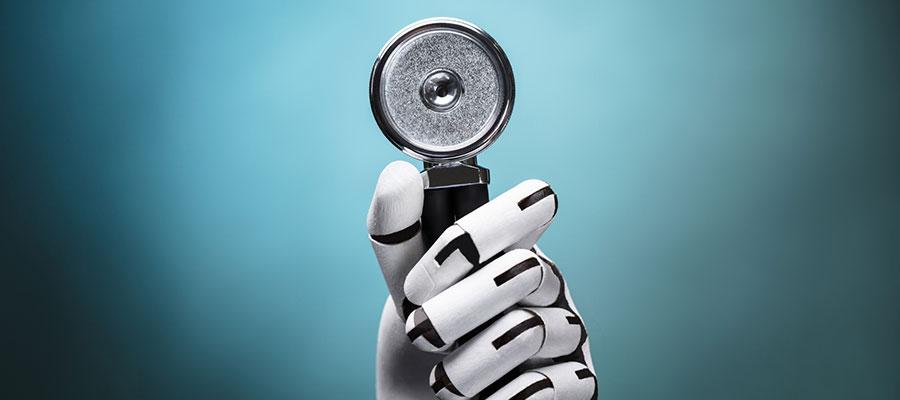How radiologists can use artificial intelligence to improve care

Artificial intelligence (AI) can lighten radiologists’ clinical burden, streamline care and ultimately save hospitals money, experts said during a recent AHA Physician Alliance webinar.
[Listen to an on-demand version of the webinar, Imaging Science in Action, here].
Arun Krishnaraj, M.D., associate professor of Radiology and Medical Imaging, University of Virginia, said physicians and others can develop AI algorithms to rapidly read imaging reports and flag abnormalities, enabling radiologists to diagnose and treat patients more quickly, which improves outcomes.
AI also can reduce radiology costs by helping hospitals manage patient flow, decrease patient wait times and avert imaging machine outages, speakers said.
Because radiology departments are “information hubs” of patient data, hospital and health system leaders should work with these departments to capitalize on that data and form the organization’s AI strategy, Krishnaraj said.
Amy Kotsenas, M.D., associate professor of radiology at Mayo Clinic in Rochester, Minn., said the health system’s leaders and radiologists are working with other departments to develop algorithms to determine how to best treat patients with polycystic kidney disease, predict brain tumors and develop other clinical advancements.
Speakers said AI can augment the work of radiologists and other clinicians, but not replace them.
“Physicians bring creativity; they bring innovation; they bring emotion; they bring empathy; they bring interfaces with patients that are the essence of practicing medicine,” said Bibb Allen, M.D., chief medical officer for ACR Data Science Institute. “AI will never be able to do that.”
Speakers also discussed the intricacies of implementing AI. Algorithms require iterative testing and strong technical development knowledge before they can be used, speakers said.
While the technology may eventually disrupt the field, that change is distant, Krishnaraj said. Currently, AI can support radiologists by automating reports, examining detailed images and otherwise tackling the “mundane” — freeing them to communicate more with patients and other clinicians, he said.
“Some of the tasks that AI will replace are ones that many clinicians, including radiologists, would look forward to [leaving behind],” Krishnaraj said. That efficiency “will be a great boon to physicians across the spectrum.”

